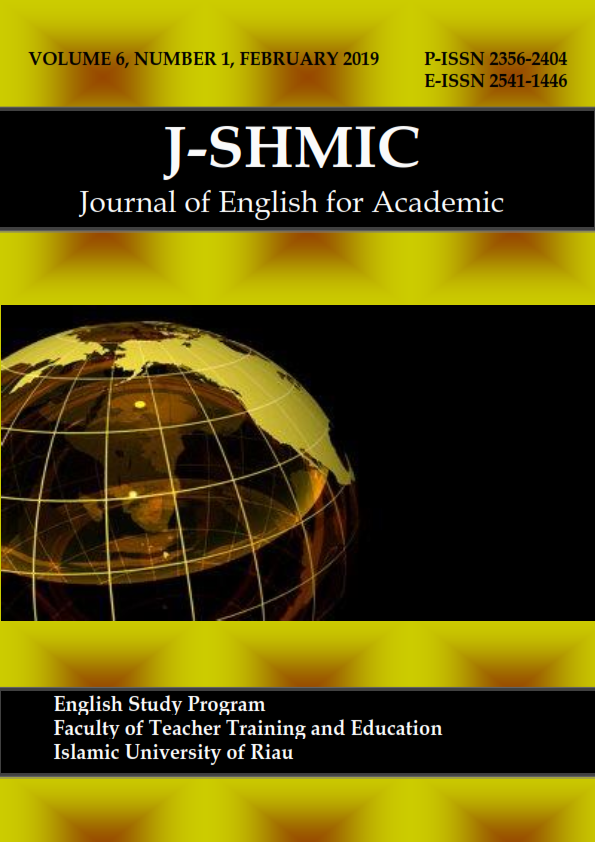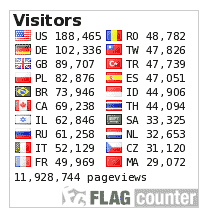Using Video To Teach Listening at English Department in Fkip Unilak Pekanbaru
Keywords:
Listening Skill, Multimedia: VideoAbstract
This study aims to provide a more interesting video-shaped learning media to teach listening courses at FKIP University of Lancang Kuning to improve students' ability in understanding the information. This research was conducted in FKIP Unilak in the odd semester of the 2016/2017 academic year. The research method used classroom action research to find out how far the learning media can improve students’ ability and the factors that influence student listening ability. Then, technique of collecting data used interview, observation, and test. Based on the result of test instrument that there was improvement in students’ listening skill after applying video as learning media. It showed from the test result that first stage was obtained the lowest score, that was 58, the highest 76, the average 76. While students’ score in the second stage is the lowest 76 and the highest 80, while the average value of 86. This indicated that the student listening ability increases after applying video as learning media. Furthermore, the interview and observation result deal with the second research question that factors affecting listening ability are influenced by the media. The second factor is the strategy and learning materials used by the lecturers in delivering teaching materials in listening learning also greatly affected the students’ ability.
Downloads
References
Arono.2014. Improving Students Listening Skill through Interactive Multimedia in Indonesia. Journal of Language Teaching and Research, Vol. 5, No. 1, pp. 63-69, January 2014
Chastain, K. (1971). Developing second- language skills: Theory and practice. Chicago: Rand McNally College Publishing.
Collin, Simon (1995). The Way Microsoft Windows 95 Works. Atlanta, GA. U.S.A: Microsoft press.
Hardini, T.I., (2007) Pembelajaran Elektronik (E-Learning): Alternatif Pembelajaran Bahasa Berbasis Konsep Multimedia. Tersedia (online): http://www.apfi-pppsi.com/cadence22/cadence22-8.html.
Jeffcoate (2009). Multimedia in practice: technology and applications. Prentice-Hall, Inc. Upper Saddle River, NJ, USA.
Kemmis, S dan R. Mc Taggart. 1998. The Action Research Planner. Victoria: Deakin University.
Mayer, R. E. (2001). Multimedia learning. New York, NY: Cambridge University Press
Mayer, R. E. (2003). The promise of multimedia learning: Using the same instructional design methods across different media.Learning and Instruction Journal , 13, pp. 125-139.
M. D. Flash and D. A. N. Mysql, “Pengembangan evaluasi pembelajaran berbasis mulimedia dengan flash, php, dan mysql,” no. 10, pp. 79–85.
Sadiman, dkk. 2010. Media Pendidikan “Pengertian, Pengembangan dan Pemanfaatannya”. Jakarta: PT Raja Grafindo Persada.
Wahono, Romi Satria,. (2007).Multimedia Technology. [Online],21 halaman. Tersedia :http://www.dinus.ac.id/download/romi-multmedia-udinus-desember2007.pdf [9Oktober 2013]
Sagala, syaiful.2010. konsep dan makna pembelajaran. Alfabeta: Bandung.
Smaldino, Lowther & Russell. 2011. Instructional Technology and Media Learning. Jakarta: Kencana Prenada Media Grup.
Published
How to Cite
Issue
Section
This is an open-access article distributed under the terms of the Creative Commons Attribution-ShareAlike 4.0 International License which permits unrestricted use, distribution, and reproduction in any medium. Users are allowed to read, download, copy, distribute, search, or link to full-text articles in this journal without asking by giving appropriate credit, providing a link to the license, and indicating if changes were made. All of the remixes, transform, or build upon the material must distribute the contributions under the same license as the original.











